- Home
- Jason Pinter
Hide Away (A Rachel Marin Thriller) Page 8
Hide Away (A Rachel Marin Thriller) Read online
Page 8
“Was she murdered? Or was it suicide?” shouted one of the reporters. Serrano stared daggers at him. He wasn’t a local.
“At this point,” George said, “I will cede the microphone to the detectives investigating Ms. Wright’s death, John Serrano and Leslie Tally. They will answer any questions you have, but remember that this is an ongoing investigation. We will release further information at the appropriate times. Detectives, over to you.”
Lieutenant George stepped back, and Serrano and Tally took the podium. Tally spoke first.
“Based on the location of the body, along with other mitigating factors, we were able to quickly determine that Ms. Wright’s death was not self-inflicted. We are investigating under the presumption that Ms. Wright was the victim of a homicide.”
Murmurs rippled through the crowd.
A reporter shouted, “Who killed her?”
“Was it her ex-husband?”
“Do you have any suspects?”
“Quiet down,” Tally said sternly.
Serrano recognized Nancy Wiles, anchor for Channel 14. She was cute. Blonde. Serrano had harbored a crush on her for some time. About six months ago she’d interviewed him for a story about a rash of burglaries in the Wooten housing projects, and once the cameras had stopped rolling, he’d asked her for her phone number. She’d smiled and given him the office switchboard line. He’d gone home alone and drunk a six-pack alone.
“At the moment,” Serrano said, “we are still gathering evidence.”
“So you don’t have any suspects,” Wiles replied, fake impatience in her voice.
Serrano deflected the question. “We have not yet made any arrests.”
“Bob Phillips, WPRD. What led you to the conclusion that Mayor Wright’s death was a homicide?”
“The location at which the body was found is inconsistent with a natural—or unaided—fall from the height of the Albertson Bridge, given the weather conditions of that night.”
“Is that the only reason?”
“No, it is not. There were other factors, but that’s all we can discuss right now.”
“Grace Meyerson, TNN. Do you believe Ms. Wright’s death is connected to any of the Wright family scandals? As you know, Eugene and Cameron Wright had numerous legal, personal, and financial troubles.”
“We have not ruled anything out and are examining all possibilities,” Tally said. “Including people connected to the Wright family businesses.”
Serrano continued to deflect questions with evasive or vague answers. Enough for salacious headlines, but little else. Over the next few days, the department switchboard would be inundated with calls from tipsters who claimed to either a) have witnessed Constance Wright’s death, b) have information that could aid in the investigation, or c) have killed Constance Wright themselves (possibly aided by Bigfoot or Lee Harvey Oswald).
So the less information Serrano gave the press, the better. That made it easy to weed out the lunatics and rubberneckers. Not to mention the sociopaths who crank called cops with fake tips and posted the conversations on YouTube for kicks. It took an incredible amount of manpower to weed through those calls, hoping one might be worth more than cubic zirconia.
The truth was Serrano couldn’t wait for the presser to be over. The media could be a useful ally when it came to tracking down criminals who were impetuous and/or stupid. The kind of criminal who might rob a gas station without a mask to hide their facial tattoo. Or mug an old lady in her apartment vestibule and get caught on camera doing it, then wander around the neighborhood like they were King Shit. In those cases, Ashby PD would get a police sketch out and canvass the neighborhoods, and more often than not, dispatch would get a legitimate hit on the tip line within hours.
Serrano didn’t think that would be the case here. Constance Wright hadn’t just happened to be on the Albertson Bridge that night. This wasn’t a random attack. This was planned ahead of time. Serrano knew Constance Wright. She was in good shape, took kickboxing classes while in office. He never saw her drunk or without her wits. During her first mayoral primary, the press had given her the nickname “Cutthroat Constance.” She could fight back. And fight dirty if need be.
Yet Hector Moreno’s examination found no signs of struggle. No defensive wounds. No bruising other than from the fall from the bridge. But her toenails. Constance had rarely been seen in public since she’d resigned her office, but a fresh pedicure meant she’d wanted to look nice. Either for herself or someone else.
And the tooth.
Her jawline was shattered by the fall, and most of her teeth were jarred loose or knocked out. Four were not recovered and presumed to have slipped under the ice. But the third molar on her left side—it was chipped. Not shattered. Like a split ice cube. Just as Rachel Marin had presumed.
Constance Wright’s blood alcohol content was staggeringly high. And Serrano was reasonably certain at least some of that alcohol intake had been against her will, likely while she was unconscious. Otherwise she would have struggled. There would have been defensive wounds.
No, Serrano believed Constance was force-fed the liquor. And with the sheared tooth, it meant the killer—or killers—weren’t on stable ground while pouring. They might have been driving. A pothole causing the bottle, or Constance’s head, to bounce around, the bottle cracking against her tooth hard enough to shear off a piece.
And he hadn’t mentioned it to Rachel, but forensics had found a single Nature Made prenatal vitamin capsule that had fallen behind Constance Wright’s bedroom dresser. Which meant not only did she intend to keep the baby, but somebody had emptied her apartment of all other signs of pregnancy and then wiped the place clean. The goal was to make it look like she had taken no steps to aid the pregnancy, giving credence to the suicide theory.
But still . . . there had been no signs of struggle in her house. No blood, hair, or fibers belonging to anyone but Constance. Which meant there was a very good chance that Constance Wright had known the person who’d killed her.
Serrano and Tally continued to field questions. As the glare grew brighter, Serrano put on his sunglasses. He surveyed the crowd.
Then he saw one face in the press pen he was not expecting to see.
Rachel Marin. She smiled sheepishly at him and waved.
Rachel arrived at the press conference ten minutes before it began. It was a full-on cattle call, reporters and onlookers jockeying for position in the snow, a giant pulsating mass of custom suits, Spanx, and hair gel.
All the best vantage points were in the press box. One thing she’d learned a long time ago: act like you belong, and most people will assume you belong.
So Rachel simply ducked underneath the tape to the press pen and stood there, arms crossed so nobody could see she wasn’t wearing an ID. The reporters and camera crews were too busy setting up and primping to notice. She checked her phone. It was nearly 3:00 p.m. No word from Steve Ruggiero. With any luck he’d never know she’d been gone.
Finally, Lt. Daryl George came out of Bauman Hall flanked by Detectives Serrano and Tally. Their faces were grim. Serrano looked uncomfortable, hands clasped in front of him, shifting weight from foot to foot. She’d met cops before. Too many. Most didn’t like being on television or in the news. They preferred to stay anonymous, unless they had political aspirations or delusions of grandeur. Serrano and Tally didn’t strike Rachel as that type.
Lieutenant George offered some kind words about Constance Wright, then ceded the podium to Serrano and Tally.
Rachel listened intently. They deflected most questions and remained vague on specifics. That was unsurprising. But Rachel wasn’t there for their answers.
The real reason she was there was the crowd itself. Given Wright’s fame and notoriety, Rachel knew the Wright presser would draw a crowd. And it had. There were at least a thousand people, in addition to several hundred in the press pen, hanging on every word and fighting for a better view.
Rachel had a gut feeling that somewhere among the
crowd was a person who knew intimate details about Constance Wright’s death.
As Detective Tally spoke, Rachel watched Serrano. He wasn’t a bad-looking man. Seemed a little burned out, and he could lose ten pounds, but for some reason she was drawn to him. He had shaved his neck, made the beard stubble look a bit neater, but Rachel could make out an angry red line where he’d nicked himself just above the Adam’s apple. A slight belly protruded over his belt—nothing a few months at the gym couldn’t fix—and a strong, set jaw. Serrano had kind eyes, but something behind them looked haunted. Rachel wondered what it was. Eventually the detective put his sunglasses on, and Rachel listened.
Then Serrano looked up, and before Rachel could think to look away, he mouthed three words quite clearly: What the hell?
Rachel smiled and waved because, well, what else could she do?
Serrano looked away from her, clearly perturbed.
Rachel turned around, scanned the crowd. Looked from face to face to face, studying each set of eyes, waiting for a twitch, someone a little too happy to be there, some sort of giveaway. She studied each pair of lips, looking for the wrong kind of smile.
And then she saw something that made her stop scanning.
A man stood alone in the snow, about twenty feet behind the last row of spectators. He was gaunt, midtwenties, with dark hollows under his bloodshot eyes, a head of patchy black hair, and sallow skin that, to Rachel, suggested narcotics had sped up the aging process. He was nibbling on his right thumbnail like a squirrel on a nut.
The man was staring at Leslie Tally as she spoke. He looked concerned. Very concerned.
She had seen that man before.
Rachel took out her cell phone and found the email she’d sent herself containing the screen grabs from the original news report from the Albertson Bridge, before they’d identified the body as that of Constance Wright. She scrolled through the photos. The crime scene. The body. Detective Serrano. Charles Willemore. The crowd of onlookers gathered at the bank of the Ashby River.
And there he was. The same man she was looking at now. He was at the river the night of Constance Wright’s death, standing among the crowd of onlookers. And now he was here at the press conference for her death.
Who the hell was this guy?
Rachel took out her cell phone, opened the Camera app, and zoomed in as far as it would go. Then she moved slowly to her left until she was hidden behind a portly reporter with apple-red cheeks and body odor like stinky cheese left to bake in the desert sun. She centered the camera on the man and took several pictures, both still and live shots.
When the presser ended, the man immediately began walking away. Fast.
Rachel hesitated, but only for a moment. She could easily send photos of the man to Serrano and Tally. Let them investigate. But a determination and anger burned inside her. Years ago, Rachel had watched one murderer walk free. She wasn’t about to take a chance of that happening again. She needed to find out who this man was.
The man exited Tellyfair Green and headed north toward Dalkey Avenue. Rachel cursed herself for not changing into flats. He wore sneakers, which gave him little traction on the icy sidewalk. He slipped and fell twice, which allowed Rachel to keep pace.
He stopped at the M-38 bus station just across the street from the Kwik Park on Dalkey, where Rachel’s car was parked. Rachel had already prepaid for two hours. She checked her phone. No word from Steve at the office. She had to follow this man.
An M-38 bus idled two blocks down on Dalkey. Rachel had maybe sixty to ninety seconds before the bus arrived. And if that happened, she’d lose him.
Rachel ran-stumbled to the Kwik Park—stupid heels—and started her car without taking her eyes off the man. She waited for the bus to pass the lot entrance, then pulled out so she was directly behind it. She angled the car to the right of the bus so she could still see the bus stop itself. Keep an eye on who got on and off. When she saw the man get on the M-38, Rachel followed it east on Dalkey.
She drove slowly, close enough to the bus to prevent other cars from sliding in front of her. The M-38 stopped every two blocks. Rachel waited at every stop, heart pounding, to see if the man got off. She knew the M-38 followed Dalkey Avenue all the way out to the suburbs in east Ashby. The longer he stayed on, the easier he’d be to follow. Less traffic, more residential. But if he got off in the middle of the city and started on foot or went into the subway, she’d be screwed. No way she’d be able to find a place to park fast enough to keep pace.
Stop after stop, he stayed on the bus. She could see him through the rear window, wearing a pair of wireless headphones. His head was bopping along to whatever he was listening to. She watched his movements. He didn’t appear to be preparing to get off anytime soon, but he looked both unreliable and impetuous, so she stayed prepared.
The bus continued east until it crossed Lansdale Road, large office and public works buildings giving way to compact condos, which city ordinance prevented from being built over three stories high. Eventually they reached the suburbs. Split-level homes, kids pulling their siblings and pets on sleds down icy sidewalks, barren tree branches glistening with icicles.
The thin man was still grooving to his music. He hadn’t picked up on the fact that the same car had been trailing the bus for miles.
Twenty minutes and six stops later, Rachel saw the thin man jerk up and look around. For a moment she panicked. Could he have missed his stop? If he doubled back, got on a bus going in the opposite direction, she could lose him.
He stood up and pressed the yellow tape to request a stop. Rachel would have to play the next few seconds carefully. On foot, the man would be more aware of his surroundings. Traffic was light, every vehicle more noticeable.
He got off the bus at the next stop, shivered, and waited on the sidewalk for a moment, as though getting his bearings. Then he put his headphones in his coat pocket and headed north up Van Brickle Way.
Traffic was light. If Rachel followed, driving slowly, he’d see her. So she pulled over at the nearest curb and watched him amble down the block. He barely got twenty feet before he tripped and fell, hard. Given his poor motor skills, Rachel surmised he was on some sort of drug—legal or otherwise—perhaps an opioid or even an SSRI, which affected the central nervous system and could slow down reaction time to poor footing.
Eventually he turned right off Van Brickle onto Valencia Lane. Rachel followed, driving cautiously. They were in a nice neighborhood. Not all that far from where Reginald Bartek lived. East Ashby was largely made up of single-family dwellings, and not cheap ones. Luxury SUVs parked in the snow-covered driveways, many homes looming behind wrought iron gates.
She noticed several homes had midsize sedans parked next to luxury vehicles. Given the time of year, Rachel figured the cheaper cars were gifts to college students currently home for Christmas break. This was the kind of neighborhood where parents gifted college freshmen a $22,000 Ford Fusion.
The man Rachel was following looked completely out of place among the stately colonials and Corinthian columns. She pulled over and parked at the curbside behind a silver Mercedes GLS. When the man was forty yards north of her on Valencia, Rachel got out of the car and zipped her coat. Her breath condensed into vapor in the cold. She’d have to follow him on foot from here.
The streets in the neighborhood were plowed, but icy patches made footing perilous. The roads where Rachel lived often went days without being plowed or salted during the winter. The Ashby government clearly prioritized the wealthier suburbs. Rachel walked carefully. If she slipped, he might notice, and then the game was up.
The sky was growing dark and gray, the color of brick mortar. Rachel was starting to think following him might have been a bad idea. But then she saw the man turn right into a driveway. She hung back across the street, watching.
The home he approached was a large Victorian, three stories high with twelve front-facing windows. It had a stone facade, wraparound veranda, and a white-columned portico.
Three thousand to thirty-five hundred square feet, Rachel guessed. Probably ran a cool $4.2 million. Rachel doubted this was his home. He didn’t look like he was capable of holding a job, let alone paying a pricey mortgage.
The man slowly climbed the stone front steps and knocked on the door. Rachel shifted from foot to foot. Her hands were cold, despite the thick wool gloves. She rubbed them together. The man went to knock again, but before he could, the front door swung open. A middle-aged man and younger woman stepped out onto the porch.
The woman wore a thick cardigan, black leggings, and hoop earrings. Her hair was done up in a bun. She was trim under the bulky sweater, with honey-colored skin and dark hair. Her skin was wrinkle-free, her legs toned. Rachel estimated her to be twenty-six or twenty-seven. The man with her was older—midforties by Rachel’s guess—but she’d need a closer look to be sure. He was stooped slightly and winced with each step. He had a bad back, perhaps a slipped disc.
The woman threw her arms around the thin man and gathered him close. He responded by loosely hugging her back, as though ashamed. The older man had his back to Rachel, but she could tell from his reaction that he either disapproved of the embrace or disapproved of the man’s presence altogether. Then the older man clapped the thin man on the back and said something Rachel couldn’t hear.
She needed to get closer. She needed to see their faces, take pictures. She crossed the street calmly, like she lived in the area. At the foot of the driveway, Rachel took out her cell phone and opened the Camera app. This time she would take a video, then try to decipher what they said when she got home.
But just as she was about to press record, a car with APD plates pulled into the Victorian’s driveway. Rachel recognized the car.
Well, this just got interesting.
All three people on the steps turned to look. For the first time, Rachel saw the older man’s face. And her breath caught in her throat.
The man was Nicholas Drummond. Constance Wright’s ex-husband. The woman must have been his new wife, Isabelle. So who the hell was the thin man?

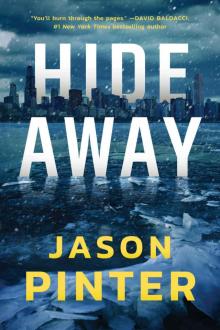 Hide Away (A Rachel Marin Thriller)
Hide Away (A Rachel Marin Thriller)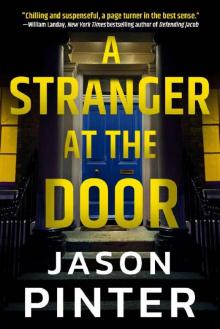 A Stranger at the Door (A Rachel Marin Thriller)
A Stranger at the Door (A Rachel Marin Thriller) The Darkness hp-5
The Darkness hp-5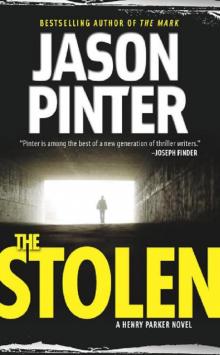 The Stolen hp-3
The Stolen hp-3 The Guilty hp-2
The Guilty hp-2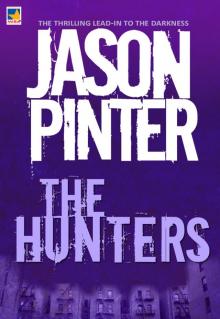 The Hunters
The Hunters The Mark hp-1
The Mark hp-1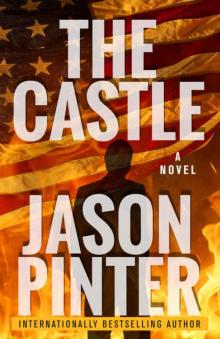 The Castle: A Ripped-From-The-Headlines Thriller
The Castle: A Ripped-From-The-Headlines Thriller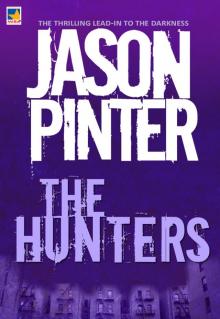 The Hunters (henry parker)
The Hunters (henry parker)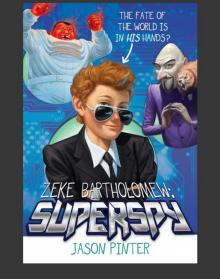 Zeke Bartholomew
Zeke Bartholomew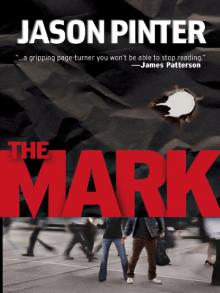 The Mark
The Mark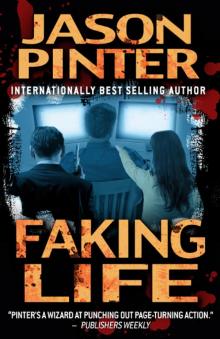 Faking Life
Faking Life![[Henry Parker 01.0] The Mark Read online](http://i1.bookreadfree.com/i2/04/08/henry_parker_01_0_the_mark_preview.jpg) [Henry Parker 01.0] The Mark
[Henry Parker 01.0] The Mark The Fury hp-4
The Fury hp-4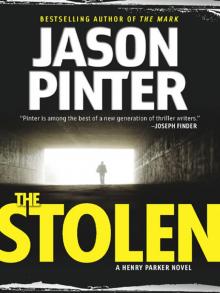 The Stolen
The Stolen The Guilty
The Guilty